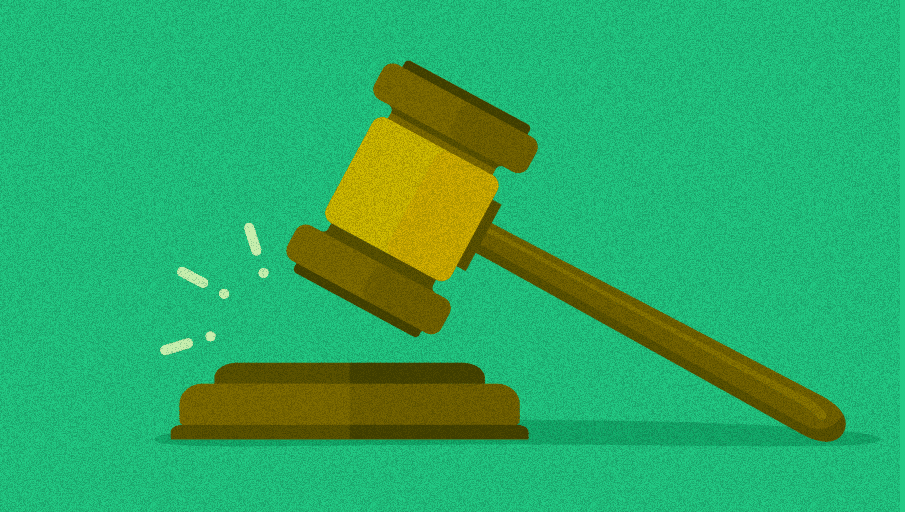In our ongoing series about getting the most out of unified auctions, we previously wrote about why having multiple demand partners is critical. In this article, we focus on best monetization practices and how to get started with bidding.
You want to make more money in the new year but are still kicking the tires on signing up with an ad mediation platform. Perhaps you’re intimidated by the idea of switching over or unsure whether it’s worth it. That makes sense, and we get it — we’re all creatures of habit. But sometimes, you have to break out of that habit and get out of your comfort zone to grow and improve. In this post, you’ll learn why it makes sense to switch to bidding.
Advantages of unified auctions
Without a unified auction at your fingertips, you’re putting yourself at a disadvantage for opportunities to earn more. If you’re still operating in waterfall mode, the sequential method that goes through a hierarchy of demand sources, you’re leaving money on the table.
The benefits of a unified auction are undeniable — it gives each demand partner the ability to bid simultaneously, ensuring more competition. Since mediation works with different ad networks that have access to your inventory, the opportunities for you to make more go up while helping to improve average revenue per daily active user (ARPDAU).
Also, an automated unified auction can make your team more efficient. For one, you’ll only have one mediation platform to log into, saving the hassle of managing multiple SDKs and logins. Ashken Minasyan from Chartboost’s supply team explains, “Migrating to a unified auction helps to bypass human error, especially when manually adding placements, a rather time-consuming process.” Time and energy saved can be dedicated to more important projects, such as improving your game or finding ways to increase retention.
So if you’re ready to make more money, now is the time to get on board the unified auction train. Let’s dive into some best practices for monetization.
Test like crazy and optimize like a champ
This wouldn’t be a proper monetization article without telling you to “test everything.” Testing simply means comparing variants so you can figure out the best setup to maximize monetization and ARPDAU. For example, you can run A/B tests on the different types of ads, ad placements, and compare offers from different networks.
If you’re focused on a hyper-casual game that requires banner ads and rewarded videos, which entice users to continue playing, you can test each to see which one drives the most engagement. This brings us to the next tip.
Know the type of player as it relates to the game
To minimize churn, choose ad content and formats that resonate with users of your specific game type. For hyper-casual games, it may make sense to work with rewarded videos and offerwalls, which give users a prize of their choice for completing specific tasks. Test both to see which one resonates most.
Within the casual game genre or for more complicated games that rely heavily on in-app purchases (IAP) or in-app ads (IAA), you might test banners and interstitials.
You could also test a combination of both IAP and IAA, as one survey shows it’s the best strategy for meeting APRDAU and retention goals. However, you may be more mindful of testing the best times to interfere with gameplay, noting when players drop off or continue playing.
Focus on a specific goal
Figure out your short- and long-term retention goals and target a specific set of key performance indicators (KPIs). Maybe you have a certain long-term retention number to reach in order to determine higher-value players. Retention is important to keep existing players engaged and satisfied. You could then segment this group to target for a future in-app purchase campaign.
Be sure to utilize the tools in your platform that display deeper analytics into acquisitions and understanding revenue flows. You may use these to set future KPIs, benchmarks, and other goals.
Diversify with brand buyers
Gone are the days when other games and apps were the only competition buying inventory. Did you know that big brands — from car makers to jewelry to fast food companies — are making their way into the in-app gaming space? These brands are using all different kinds of ad formats, including interstitials, video interstitials, rewarded videos, and banners.
The upside to using brands is that they have the money to spend but may do so at a slightly lower price than user acquisition (UA) buyers. However, churn and retention may be less of an issue since the user won’t necessarily leave to play a competitor’s game after seeing its ad.
Working with a wide variety of networks that offer brand buyers can be beneficial when looking to make more money, improve retention rates, and diversify your ad suite. It’s one more reason to use an ad mediation platform — it can help keep you up to speed with the latest industry trends, including household brands entering the gaming ad space.
Move quickly
Changes to iOS 14 and IDFA (the “identifier for ads,” which identifies when users interact with a mobile campaign and whether specific users click on advertising) made waves in the last few years.
What did we learn from this big change? Publishers and developers who adapted quickly and tested new methods for better ARPDAU were in the best position to maintain high monetization.
These changes also served as a big reason for publishers and developers to move from waterfall to bidding, as it’s easier to get the most out of each ad impression through real-time auctions.
Bidding is table stakes, and publishers that haven’t switched over to a unified platform may find it more challenging to meet and exceed their monetization goals.
Minasyan adds, “On an industry level, the economic recession reinforces mergers and acquisitions of companies, combining resources to face challenges and ensure growth. Therefore, publishers need to be even more proactive in testing new networks, new mediation platforms, as well as be open to experimenting with new ad formats.”
Maximize your monetization in the new year with Chartboost Mediation
Our ad mediation platform, Chartboost Mediation, helps publishers take full control over their mediation program, driving real-time optimizations that ensure the best ad for a given user fills their ad slot.
To tap into the highest-value, highest-retention engaged users, start bidding with Chartboost Mediation. It provides access to the industry’s leading ad networks and demand sources including Google, Meta Audience Network, AppLovin, ironSource, Digital Turbine, and more — all through the implementation of one SDK.
To boost efficiency and maximize revenue in the new year — get started with Chartboost Mediation today.



